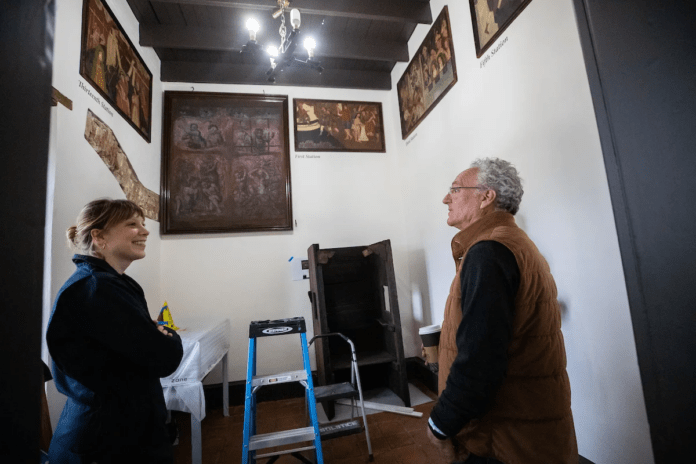New at Mission San Gabriel Museum is a complete name list of 7,054 Native Americans who were once baptized at Misión San Gabriel Arcángel, more commonly known as Mission San Gabriel, in the city of San Gabriel, between 1771 and 1848.
Granting visitors first-time access and insight into the life and history of thousands of Indigenous people, this Wall of Names is a memorial and the heart of the newly reimagined Mission San Gabriel Museum, which opens to the public on June 30 after a three-year closure caused by the COVID-19 pandemic and a 2020 fire that consumed the mission’s roof, interior, and imperiled the mission’s entire historical collection.
The museum’s new exhibition, “Mission San Gabriel Arcángel, 1771-1900: Natives, Missionaries, and the Birth of Catholicism in Los Angeles,” also coincides with the mission’s reopening. This is the culmination of a multi-year effort to engage Native consultants and a range of experts in the research, interpretation, conservation, and presentation of the history of Mission San Gabriel.
The mission, built by Native labor, is the site of 5,600 Native American burials, and is a place of profound Native memory and religious observance. However, Native voice, knowledge, and history until now have never been incorporated into the mission museum’s curatorial practices or gallery displays. This exhibition, therefore, seeks to acknowledge a 250-year-long erasure of the mission’s Native history and to displace a Eurocentric understanding of the legacies of Spanish colonization and Catholic missionization.
The integration of Indigenous and Catholic church histories is a first for the mission, thanks to exhibition lead curator, Steven Hackel, a University of California, Riverside history professor who worked alongside a team of collaborators, including associate curator Yve Chavez, a Gabrieleno/Tongva San Gabriel Band of Mission Indians member and assistant professor of art history at the University of Oklahoma.






